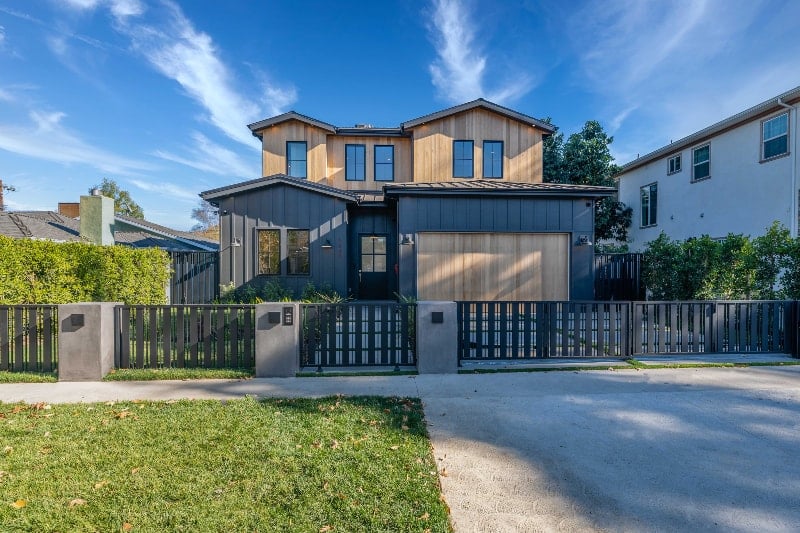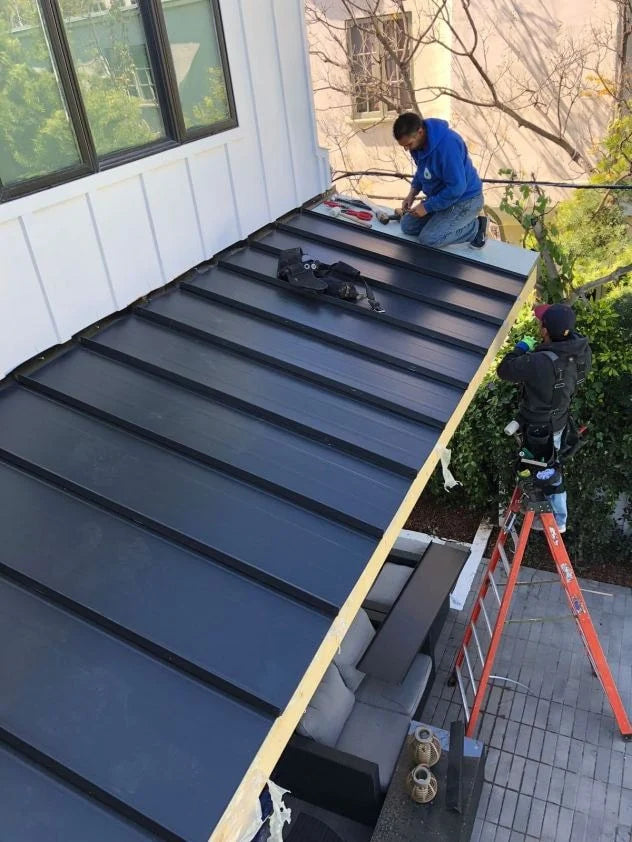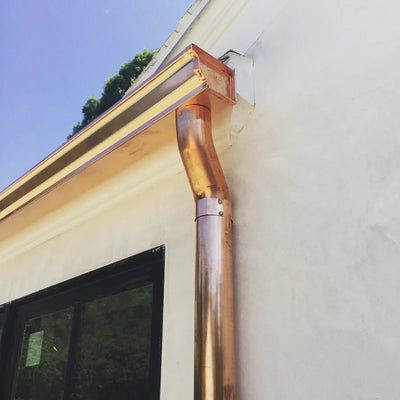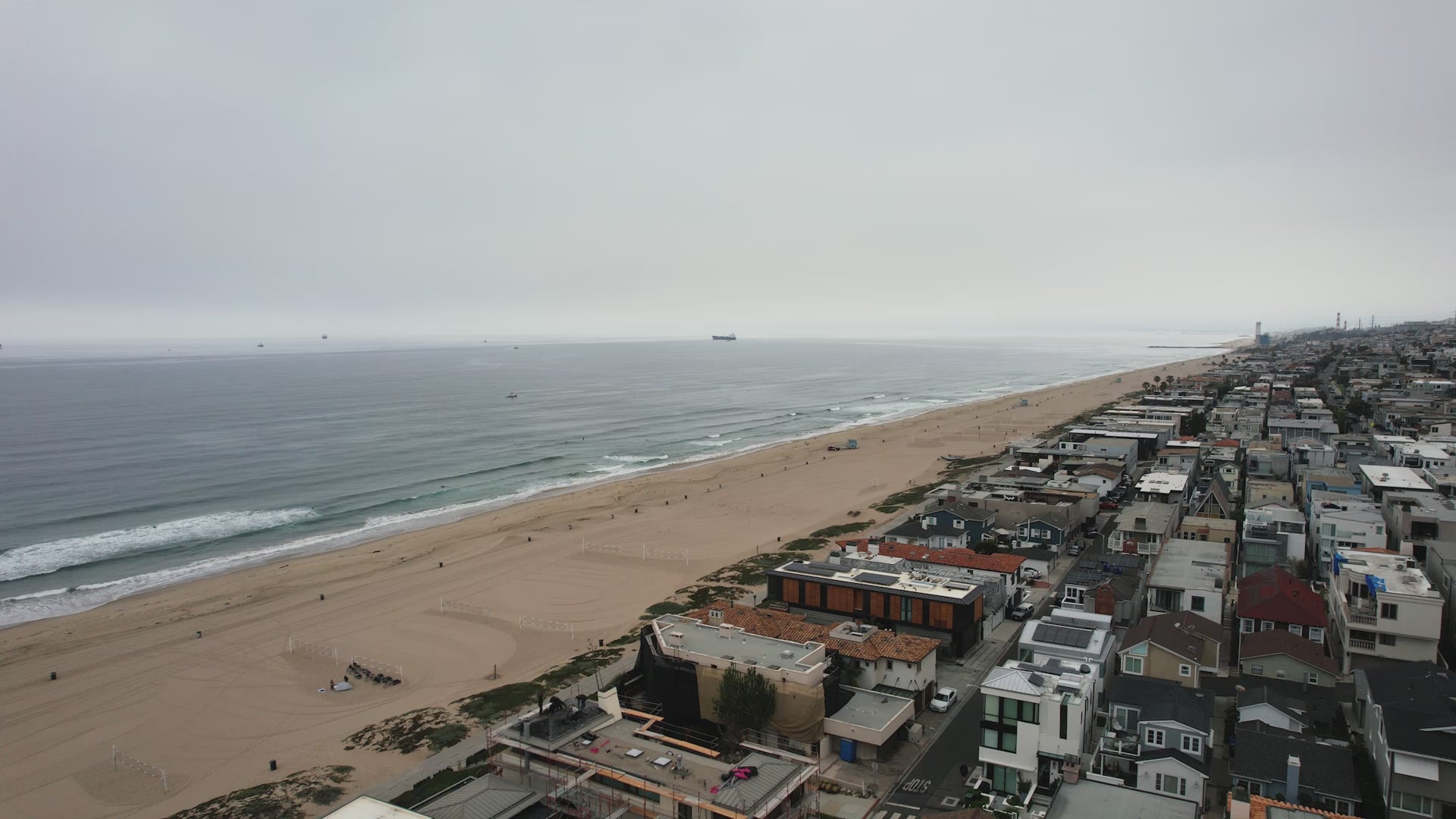
Committed to Quality
Top Rated Metal Roofing & Quality Rain Gutter Services in Los Angeles Since 2012

Los Angeles Residents and Businesses Love Rain Gutter Pros!
Trusted by customers with 190+ 5-star reviews
Our Products & Services
Why Choose Us?


Committed to Quality In Every Project
At Rain Gutter Pros Inc., we maintain a high commitment to the utmost professionalism in our rain gutter and metal roofing projects. Serving Los Angeles, Orange and Ventura counties, we pride ourselves in providing world class service to each and every customer, regardless of the size or scope of the job.
Local Professionals in LA
Free Estimates within 48 Hours
Class A Fire-Rated Materials

Leave the job to the pros
Testimonials
I have to say that I have NEVER experienced such friendly, caring and prompt service from anyone in LA county like Oz from Rain Gutter Pros! OZ came out last Saturday to give us an estimate to clean our rain gutters. He spent time examining all of our gutters and our roof and found a rather large mound of debris in the corner of one of our gutters and removed it. He said all of our other gutters were clean and our roof looked sound. He spent about 15-20 minutes at our house and refused to take any money!!! He will get ALL of our business for future cleaning and/or repair! So impressed with his caring professionalism!
Sharon Stender
I recently remodeled my house in Studio City and when it was time to change the rain gutters I decided to use Rain Gutter Pros because a friend recommended me after he used their services at his house. I have to admit that I'm one of those people who ask a lot of questions but Oz was really patient, knowledgeable and easy to work with. He came out himself to do the installation along with another worker and everything was completed on schedule and looked great! The work included removing my old gutters and installing new seamless gutters around the front and back of my house. Oz was at my house by 8am and completed everything by 3pm and left no mess behind! I was pleased that he took care of disposing the old gutters and I didn't have to worry about that hassle. I would definitely recommend Rain Gutter Pros to anyone needing to service or replace their gutters!
Leora Ben
Had a small job to add a new section of gutter and downspout. They were really easy to get a quote, arrange and schedule for the work, the arrived on time, were very professional and finished within an hour. They even put up some extra flashing to redirect some water away from my awning. Highly recommend!
Gary Shar
Had a new roof applied last year and when it leaked this year I was told the gutters are bad and I needed a gutter guy. Called Rain Gutter Pros and spoke with Tom. He was super helpful and got out to our commercial property at his earliest availability. After coming into the building and going up on the roof with me - he advised that the issue is a bad gutter and a skylight that would be like surgery to do. He advised we try an adhesive to coat the gutter and the surrounding skylight to see if that will solve our issue before going the much more invasive route. Although it wouldn't be something he could assist with he wanted to be honest and give me much cheaper potential solution to try before contracting out the entire removal and replacement. Appreciate the prompt response, appointment and honesty. Will be using them for sure if the replacement ends up being the solution. Ryan - Decades Inc 8214 Melrose Ave. Los Angeles
Ryan Hagen
We were very impressed with Rain Gutter Pros. We had an unusual situation. We had just replaced our wood patio cover with a Smart Patio Plus cover which is made of metal. The manufactured metal cover has a super gutter to catch the rain from the house. The problem was, how to connect the super gutter on each side to the existing gutters. I had two contractors tell me that it would have to come down on the wall over my BBQ counter which I had said absolutely not. It would look terrible. I had a rough idea about how to do it and when Oz came out he listened to my idea and he made it happen! I was so pleased how ingenious he was in figuring it out to the last detail. His crew was courteous and professional and leaving our yard super clean. I will recommend Oz and Rain Gutter Pros to everyone.
Carolyn Strametz
Love these guys and we know something about contractors. We have remodeled our home inside and out, including pool, travertine deck, IPE wood deck, roof, cement driveways, painting, fencing, awnings, lights, landscaping, shutters, etc etc etc. just on the outside. Don't get me started on the inside. Oz of Rain Gutter Pros put gutters all around our old house perfectly from start to finish. Plus, we changed our minds at one point, and had to move a downspout, and it was.....no problem, done. Careful examination -- we have learned to carefully examine everything contractors do -- so far finds it...well....flawless. Really nice looking, solid, suspiciously excellent. Contractors tend to do just do things and make choices without asking. We all wish they would continually lay out the choices and ask first. Oz was communicative (!) and his decision making was excellent. Wish he did more than gutters.
Doug Baldwin
Rain Gutter Pro’s…. absolutely amazing, the gutters? yes, but the metal roof they installed was even better than amazing. Always wanted a metal roof but couldn’t find anyone to take on the challenge, tough access, many different pitches, but Oz and the crew at Rain Gutters Pro’s did it with a smile. great quality of work and materials, plus a fabulous look in the end. A little more expensive than the torch down roll roof others offered but I won’t be worrying about leaks 10 years down the road as I did on the last one, and a great fire rating to boot… an architectural work of art, thanks Rain Gutter Pro’s
Daniel Whifler
I’m a painting contractor and have been working with gutter Pros for years their quality of work is second to none and they have great pricing
Danny Lambert
Unbelievable story of customer service! They replaced my gutter covers about a year ago. Recently I noticed a leak in my gutter but forgot they only replaced the covers not the gutter. I called them to come out and fix the leak (forgetting they had not actually replaced the gutters). They came out to look at the leak and graciously pointed out that the gutters had not been replaced, only the covers. The covers had nothing to do with the leak. Rather than express frustration at my wasting their time, Willie and Tony simply said "it's an easy fix why don't we fix it for you anyway." I was shocked. Needless to say I felt awful about wasting their time. They went way beyond the call of duty; it wasn't even their gutter! You simply don't find that kind of customer service these days. I know that kind of customer service comes from the top and Oz (owner / manager) clearly places the customer first. I will be telling this story for a long time. Thank you Rain Gutter Pros!
Mark Jordan
In anticipation of the coming El Niño season, I called Rain Gutter Pros to have them check the gutters on my house. They were able to get me scheduled right away and the estimator Adi came by right on time on our scheduled date. He was very patient as I asked my usual million questions. He gave me a reasonable estimate and I closed with him on the spot. The installers came on the scheduled day and did the work quickly and efficiently. I am beyond happy with Adi and Rain Gutter Pros and highly recommend them to everyone.
Lilya O
I have to say that I have NEVER experienced such friendly, caring and prompt service from anyone in LA county like Oz from Rain Gutter Pros! OZ came out last Saturday to give us an estimate to clean our rain gutters. He spent time examining all of our gutters and our roof and found a rather large mound of debris in the corner of one of our gutters and removed it. He said all of our other gutters were clean and our roof looked sound. He spent about 15-20 minutes at our house and refused to take any money!!! He will get ALL of our business for future cleaning and/or repair! So impressed with his caring professionalism!
Sharon Stender
I recently remodeled my house in Studio City and when it was time to change the rain gutters I decided to use Rain Gutter Pros because a friend recommended me after he used their services at his house. I have to admit that I'm one of those people who ask a lot of questions but Oz was really patient, knowledgeable and easy to work with. He came out himself to do the installation along with another worker and everything was completed on schedule and looked great! The work included removing my old gutters and installing new seamless gutters around the front and back of my house. Oz was at my house by 8am and completed everything by 3pm and left no mess behind! I was pleased that he took care of disposing the old gutters and I didn't have to worry about that hassle. I would definitely recommend Rain Gutter Pros to anyone needing to service or replace their gutters!
Leora Ben
Had a small job to add a new section of gutter and downspout. They were really easy to get a quote, arrange and schedule for the work, the arrived on time, were very professional and finished within an hour. They even put up some extra flashing to redirect some water away from my awning. Highly recommend!
Gary Shar
Had a new roof applied last year and when it leaked this year I was told the gutters are bad and I needed a gutter guy. Called Rain Gutter Pros and spoke with Tom. He was super helpful and got out to our commercial property at his earliest availability. After coming into the building and going up on the roof with me - he advised that the issue is a bad gutter and a skylight that would be like surgery to do. He advised we try an adhesive to coat the gutter and the surrounding skylight to see if that will solve our issue before going the much more invasive route. Although it wouldn't be something he could assist with he wanted to be honest and give me much cheaper potential solution to try before contracting out the entire removal and replacement. Appreciate the prompt response, appointment and honesty. Will be using them for sure if the replacement ends up being the solution. Ryan - Decades Inc 8214 Melrose Ave. Los Angeles







